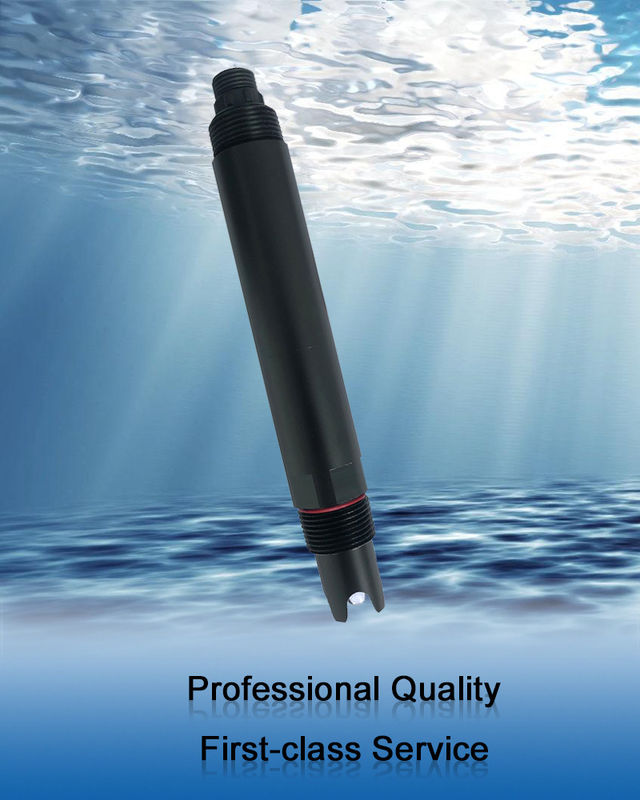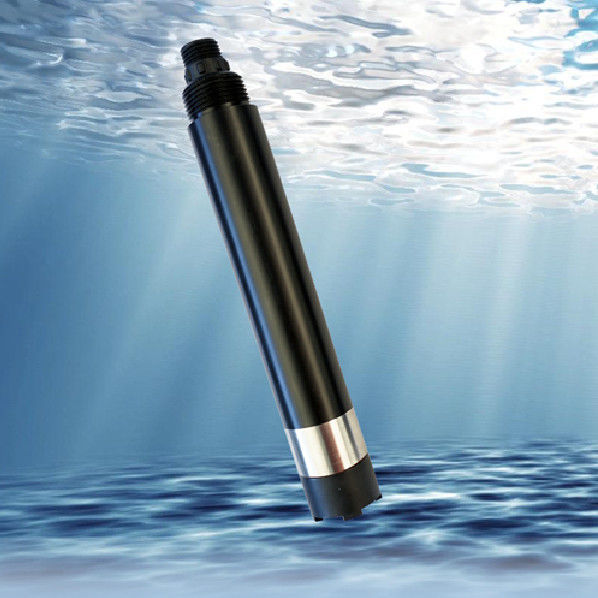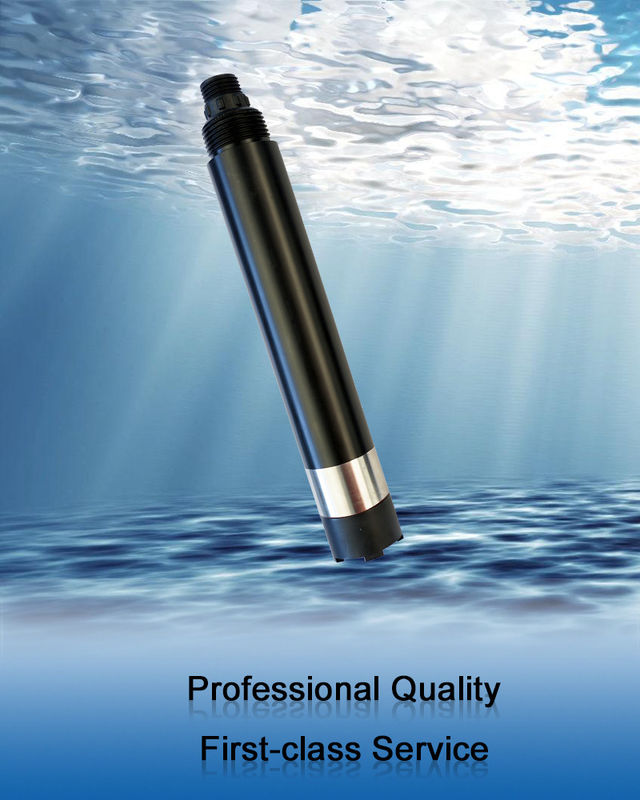Fluorescence Modbus Dissolved Oxygen Meter Immersion Mounting
1.Principle
KFDO310 integrated on-line fluorescence dissolved oxygen sensor is designed and made based on the quenching principle of excited fluorescence of specific substances in physics. The blue light from the light-emitting diode illuminates the fluorescent material on the inner surface of the fluorescent cap. The fluorescent material on the inner surface is excited and emits red light. By detecting the phase difference between the red light and the blue light, and comparing it with the internal calibration value, the concentration of oxygen molecule can be calculated, and the final value can be output by temperature automatic compensation.
2.Feature
- No electrolytes, no polarization
- No need to consume oxygen, not affected by the flow rate
- Built-in temperature sensor, automatic temperature compensation
- Free from chemicals like sulfides
- Small drift, fast response, more accurate measurement
- Maintenance-free, long service life, lower use cost
- Fluorescent caps are easy to replace
- RS-485 interface, Modbus-RTU protocol
3.Technical Specifications
| Model number |
KFDO310 |
| Measuring principle |
fluorescence |
| Range |
0ー20 mg/L (0ー200% saturation, 25 °C) |
| Resolution |
0.01 mg/l, 0.1 °C |
| Precision |
± 2% f.s. , ± 0.5 °C |
| Temperature compensation |
Automatic temperature compensation (PT1000) |
| Output mode |
RS-485 bus, Modbus-RTU protocol |
| Working conditions |
0ー45 °C, < 0.2 mpa |
| Storage temperature |
- 5 ~ 65 °C |
| Installation mode |
Immersion mounting |
| Cable length |
5 meters, other length can be customized |
| Power consumption |
< 0.05 W |
| Power supply |
12 ~ 24 VDC ± 10% |
| Protection level |
IP68 |
| Calibration |
Two-point calibration |
| Fluorescent cap life |
Guaranteed Use for one year (under normal use) |
| Material for sensor housing |
Pom and 316L stainless steel |
4.Dimensional Drawing

5.Installation and Electrical Connection
Installs

The temperature sensing part should be immersed below the liquid surface to avoid collision with the film head surface. The head part of the membrane should be free from sediment.
Examples of Freshwater Organisms and Dissolved Oxygen Requirements

Minimum dissolved oxygen requirements of freshwater fish
Coldwater fish like trout and salmon are most affected by low dissolved oxygen levels 19. The mean DO level for adult salmonids is 6.5 mg/L, and the minimum is 4 mg/L ¹². These fish generally attempt to avoid areas where dissolved oxygen is less than 5 mg/L and will begin to die if exposed to DO levels less than 3 mg/L for more than a couple days ¹⁹. For salmon and trout eggs, dissolved oxygen levels below 11 mg/L will delay their hatching, and below 8 mg/L will impair their growth and lower their survival rates. ¹⁹ When dissolved oxygen falls below 6 mg/L (considered normal for most other fish), most trout and salmon eggs will die. ¹⁹
Bluegill, Largemouth Bass, White Perch, and Yellow Perch are considered warmwater fish and depend on dissolved oxygen levels above 5 mg/L21. They will avoid areas where DO levels are below 3 mg/L, but generally do not begin to suffer fatalities due to oxygen depletion until levels fall below 2 mg/L 22. The mean DO levels should remain near 5.5 mg/L for optimum growth and survival ¹².
Walleye also prefer levels over 5 mg/L, though they can survive at 2 mg/L DO levels for a short time. Muskie need levels over 3 mg/L for both adults and eggs ²⁵. Carp are hardier, and while they can enjoy dissolved oxygen levels above 5 mg/L, they easily tolerate levels below 2 mg/L and can survive at levels below 1 mg/L ²⁶.
The freshwater fish most tolerant to DO levels include fathead minnows and northern pike. Northern pike can survive at dissolved oxygen concentrations as low as 0.1 mg/L for several days, and at 1.5 mg/L for an infinite amount of time ²⁷. Fathead minnows can survive at 1 mg/L for an extended period with only minimal effects on reproduction and growth.
As for bottom-dwelling microbes, DO changes don’t bother them much. If all the oxygen at their water level gets used up, bacteria will start using nitrate to decompose organic matter, a process known as denitrification. If all the nitrogen is spent, they will begin reducing sulfate ¹⁷. If organic matter accumulates faster than it decomposes, sediment at the bottom of a lake simply becomes enriched by the organic material.

 Your message must be between 20-3,000 characters!
Your message must be between 20-3,000 characters! Please check your E-mail!
Please check your E-mail!  Your message must be between 20-3,000 characters!
Your message must be between 20-3,000 characters! Please check your E-mail!
Please check your E-mail! 



